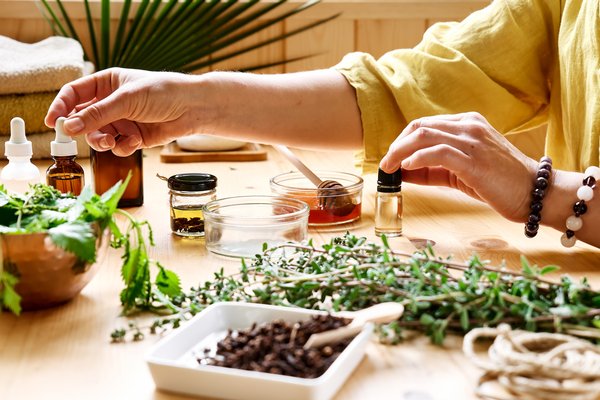
The use of plants for health and healing dates back thousands of years, forming the foundation of many traditional medicine systems around the globe. Today, herbal remedies continue to be a popular choice for individuals seeking natural approaches to support their general well-being and address common, everyday concerns. Understanding how these botanical allies work and how to use them safely and effectively is key to incorporating them into a balanced lifestyle.
What Are Herbal Remedies?
Herbal remedies are derived from plants, utilizing various parts like leaves, flowers, roots, seeds, and bark. These plant components contain compounds known as phytochemicals, which are believed to have beneficial effects on the body. Unlike pharmaceutical drugs that often isolate specific compounds, herbal remedies typically involve the whole plant or specific plant parts, leveraging the potential synergistic effects of multiple phytochemicals working together. They come in various forms, including teas, tinctures, capsules, powders, and topical preparations.
Popular Herbal Remedies and Their Traditional Uses
Many herbs are commonly used for a range of purposes, often based on centuries of traditional practice. It's important to remember that while many people find these helpful for mild, everyday issues, they are not substitutes for professional medical advice or treatment for serious conditions.
Chamomile (Matricaria chamomilla)
Known for its calming properties, chamomile is frequently used as a tea to promote relaxation and ease mild digestive upset. It contains compounds like apigenin, which is thought to contribute to its soothing effects. It's a popular bedtime beverage for those seeking gentle support for winding down.
Peppermint (Mentha piperita)
Peppermint is widely recognized for its benefits for digestive health. Peppermint tea or capsules containing peppermint oil are traditionally used to help soothe indigestion, bloating, and gas. Its active component, menthol, is thought to relax the muscles of the digestive tract.
Ginger (Zingiber officinale)
Ginger root has a long history of use, particularly for addressing nausea and supporting digestive function. It contains compounds like gingerols, which give it its characteristic flavor and are believed to have anti-inflammatory and antioxidant properties. It can be consumed fresh, dried, or in supplement form.
Echinacea (Echinacea purpurea)
Echinacea is often sought after for its potential role in supporting the immune system, especially during seasonal changes. While research on its effectiveness is ongoing, it remains a popular choice for those looking for natural ways to bolster their body's defenses. It's typically used for short periods.
Turmeric (Curcuma longa)
Curcumin, the main active compound in turmeric, is a potent antioxidant and has been studied for its potential anti-inflammatory effects. Turmeric is a staple in many cuisines and is also available as a supplement. Often, it's recommended to take it with black pepper to enhance absorption.
Lavender (Lavandula angustifolia)
Lavender is renowned for its aromatic scent and is often used in aromatherapy to promote relaxation, reduce stress, and improve sleep quality. Lavender essential oil can be used in diffusers, baths, or diluted for topical application (always follow safety guidelines for essential oils).
Forms of Herbal Remedies
Herbal remedies are available in numerous forms, each with its own advantages and traditional uses:
- Teas: Simple and soothing, made by steeping dried herbs in hot water. Good for gentle effects and hydration.
- Tinctures: Concentrated liquid extracts made by soaking herbs in alcohol or glycerin. They are potent and quickly absorbed.
- Capsules/Tablets: Provide standardized doses of dried or extracted herbs, convenient for daily use.
- Powders: Dried herbs ground into a powder, can be mixed into food or drinks.
- Topicals: Creams, salves, or poultices applied directly to the skin for localized effects.
Safety and Considerations When Using Herbal Remedies
While natural, herbal remedies are not without potential risks. It is crucial to approach their use responsibly. Factors to consider include:
- Quality and Sourcing: Choose high-quality products from reputable sources to ensure purity and potency.
- Dosage: Follow recommended dosages; more is not always better.
- Interactions: Herbs can interact with prescription medications, over-the-counter drugs, and other supplements.
- Side Effects: Some herbs can cause side effects, especially at high doses or in sensitive individuals.
- Contraindications: Certain herbs should be avoided during pregnancy, breastfeeding, or with specific health conditions.
- Professional Advice: Always consult with a healthcare provider, especially if you have underlying health conditions, are taking medications, or are pregnant or breastfeeding. They can provide personalized advice and help you avoid potential interactions or contraindications.
Using herbal remedies can be a valuable part of a holistic approach to wellness when done thoughtfully and safely. They offer a way to connect with the historical use of plants for health and provide potential support for common concerns. However, they should complement, not replace, conventional medical care when needed. Educating yourself about specific herbs and consulting with qualified professionals are essential steps for incorporating them wisely into your health routine.

